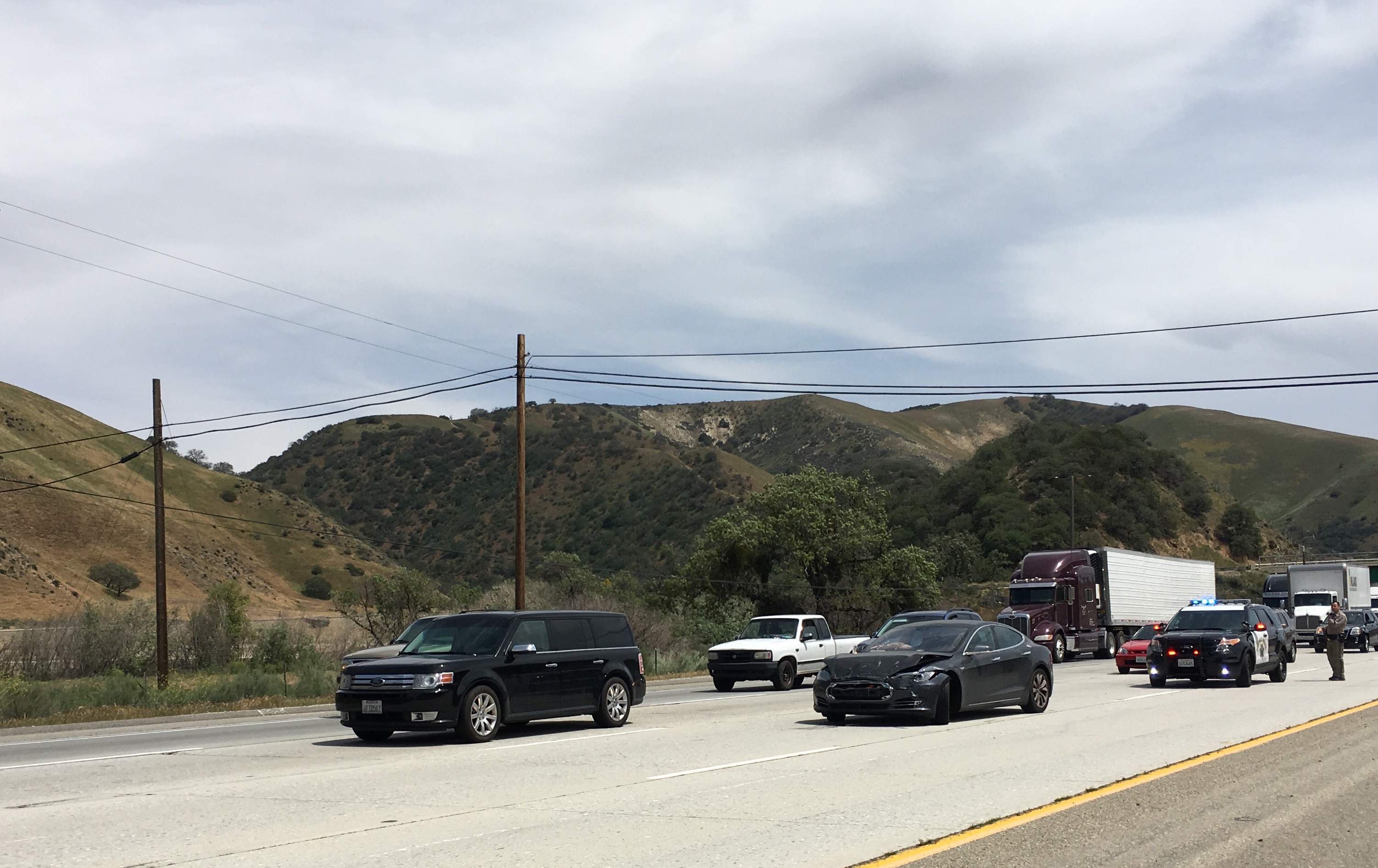There are a few articles covering a same incidence in Lebec, CA on 4/26/2016:
Another driver says Tesla’s autopilot failed to brake; Tesla says otherwise
Tesla Autopilot Misfires, Model S Crashes into Car at Speed on the I-5
Second Model S driver crashes and blames Tesla Autopilot for not stopping
Arianna Simpson was driving her Model S north from Los Angeles on I-5, cruising in autopilot mode. "All of a sudden the car ahead of me came to a halt. There was a decent amount of space so I figured that the car was going to brake as it is supposed to and didn't brake immediately. When it became apparent that the car was not slowing down at all, I slammed on the brakes but was probably still going 40 when I collided with the other car,"
The article reported that Tesla's log showed the autopilot mode was disengaged when she manually hit the brake.
If I understand correctly, in summary:
1) the driver blamed the crash to the "beta" automation that did not slow down the car in time and she had to manually applied the brake when it was too late.
2) Tesla blog shows that the automation was disabled at the time of the crash and the car was in manual mode at that time when the driver manually applied the brake.

Another driver says Tesla’s autopilot failed to brake; Tesla says otherwise
Tesla Autopilot Misfires, Model S Crashes into Car at Speed on the I-5
Second Model S driver crashes and blames Tesla Autopilot for not stopping
Arianna Simpson was driving her Model S north from Los Angeles on I-5, cruising in autopilot mode. "All of a sudden the car ahead of me came to a halt. There was a decent amount of space so I figured that the car was going to brake as it is supposed to and didn't brake immediately. When it became apparent that the car was not slowing down at all, I slammed on the brakes but was probably still going 40 when I collided with the other car,"
The article reported that Tesla's log showed the autopilot mode was disengaged when she manually hit the brake.
If I understand correctly, in summary:
1) the driver blamed the crash to the "beta" automation that did not slow down the car in time and she had to manually applied the brake when it was too late.
2) Tesla blog shows that the automation was disabled at the time of the crash and the car was in manual mode at that time when the driver manually applied the brake.




